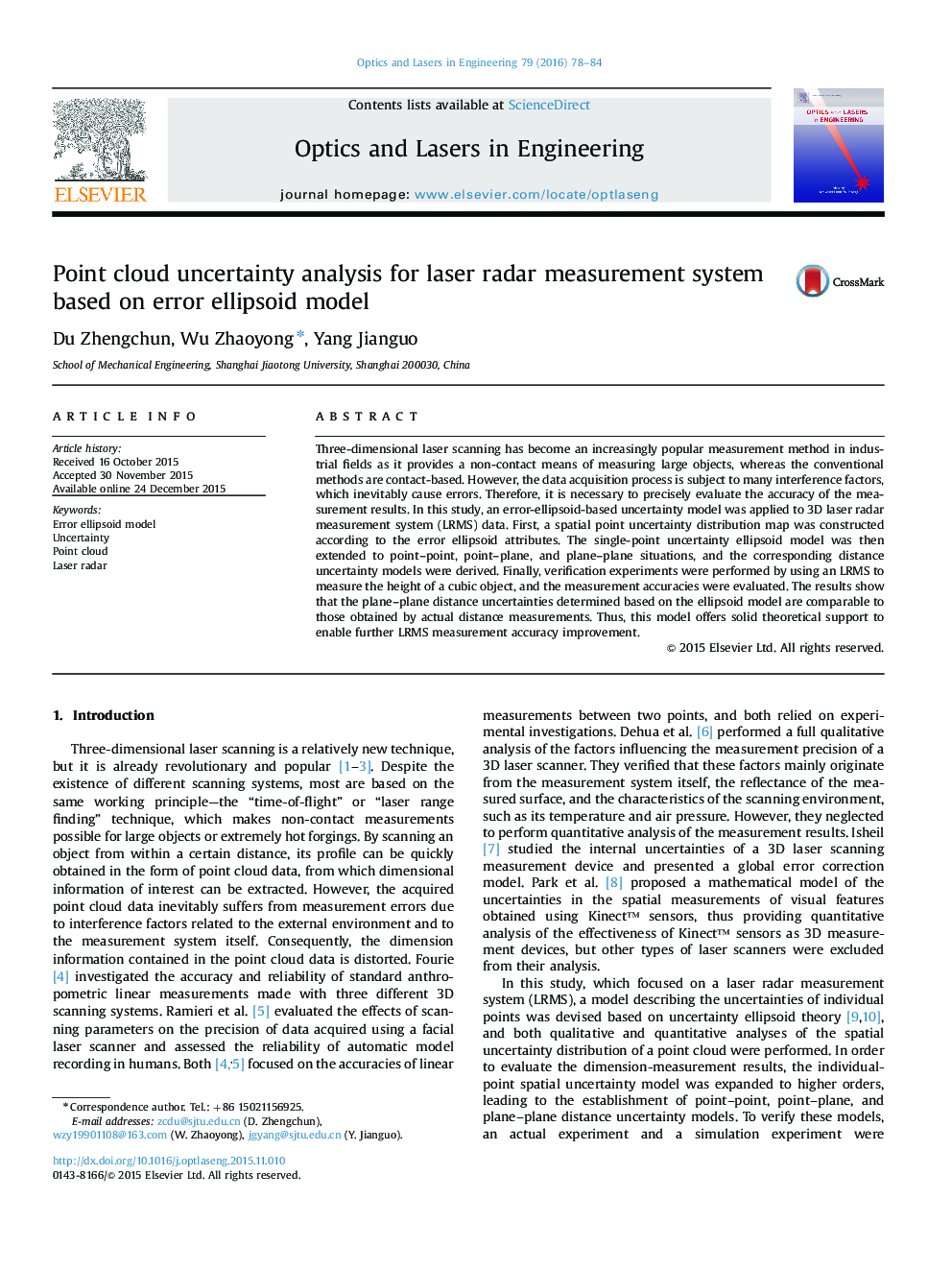| Article ID | Journal | Published Year | Pages | File Type |
|---|---|---|---|---|
| 735924 | Optics and Lasers in Engineering | 2016 | 7 Pages |
•Ellipsoid uncertainty model was applied to 3D laser radar measurement system.•Single-point, point–point, point–plane, and plane–plane models were studied.•Actual and simulated 3D distance measurement errors were compared.•Ellipsoid-based plane–plane distance error matched traditional method results.•Ellipsoid-based error model will improve 3D laser radar measurement accuracy.
Three-dimensional laser scanning has become an increasingly popular measurement method in industrial fields as it provides a non-contact means of measuring large objects, whereas the conventional methods are contact-based. However, the data acquisition process is subject to many interference factors, which inevitably cause errors. Therefore, it is necessary to precisely evaluate the accuracy of the measurement results. In this study, an error-ellipsoid-based uncertainty model was applied to 3D laser radar measurement system (LRMS) data. First, a spatial point uncertainty distribution map was constructed according to the error ellipsoid attributes. The single-point uncertainty ellipsoid model was then extended to point–point, point–plane, and plane–plane situations, and the corresponding distance uncertainty models were derived. Finally, verification experiments were performed by using an LRMS to measure the height of a cubic object, and the measurement accuracies were evaluated. The results show that the plane–plane distance uncertainties determined based on the ellipsoid model are comparable to those obtained by actual distance measurements. Thus, this model offers solid theoretical support to enable further LRMS measurement accuracy improvement.
